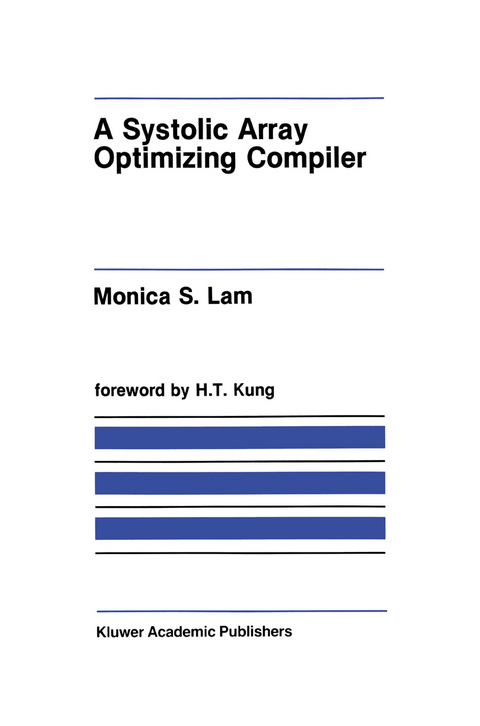
A Systolic Array Optimizing Compiler
Springer-Verlag New York Inc.
978-1-4612-8961-6 (ISBN)
1. Introduction.- 1.1. Research approach.- 1.2. Overview of results.- 1.3. This presentation.- 2. Architecture of Warp.- 2.1. The architecture.- 2.2. Application domain of Warp.- 2.3. Programming complexity.- 3. A Machine Abstraction.- 3.1. Previous systolic array synthesis techniques.- 3.2. Comparisons of machine abstractions.- 3.3. Proposed abstraction: asynchronous communication.- 3.4. Hardware and software support.- 3.5. Chapter summary.- 4. The W2 Language and Compiler.- 4.1. The W2 language.- 4.2. Compiler overview.- 4.3. Scheduling a basic block.- 5. Software Pipelining.- 5.1. Introduction to software pipelining.- 5.2. The scheduling problem.- 5.3. Scheduling algorithm.- 5.4. Modulo variable expansion.- 5.5. Code size requirement.- 5.6. Comparison with previous work.- 5.7. Chapter summary.- 6. Hierarchical Reduction.- 6.1. The iterative construct.- 6.2. The conditional construct.- 6.3. Global code motions.- 6.4. Comparison with previous work.- 7. Evaluation.- 7.1. The experiment.- 7.2. Performance analysis of global scheduling techniques.- 7.3. Performance of software pipelining.- 7.4. Livermore Loops.- 7.5. Summary and discussion.- 8. Conclusions.- 8.1. Machine abstraction for systolic arrays.- 8.2. Code scheduling techniques.- References.
| Reihe/Serie | The Springer International Series in Engineering and Computer Science ; 64 |
|---|---|
| Zusatzinfo | XXII, 202 p. |
| Verlagsort | New York, NY |
| Sprache | englisch |
| Maße | 155 x 235 mm |
| Themenwelt | Sachbuch/Ratgeber ► Natur / Technik ► Garten |
| Mathematik / Informatik ► Informatik ► Theorie / Studium | |
| Informatik ► Weitere Themen ► Hardware | |
| Technik ► Elektrotechnik / Energietechnik | |
| ISBN-10 | 1-4612-8961-0 / 1461289610 |
| ISBN-13 | 978-1-4612-8961-6 / 9781461289616 |
| Zustand | Neuware |
| Informationen gemäß Produktsicherheitsverordnung (GPSR) | |
| Haben Sie eine Frage zum Produkt? |
aus dem Bereich


